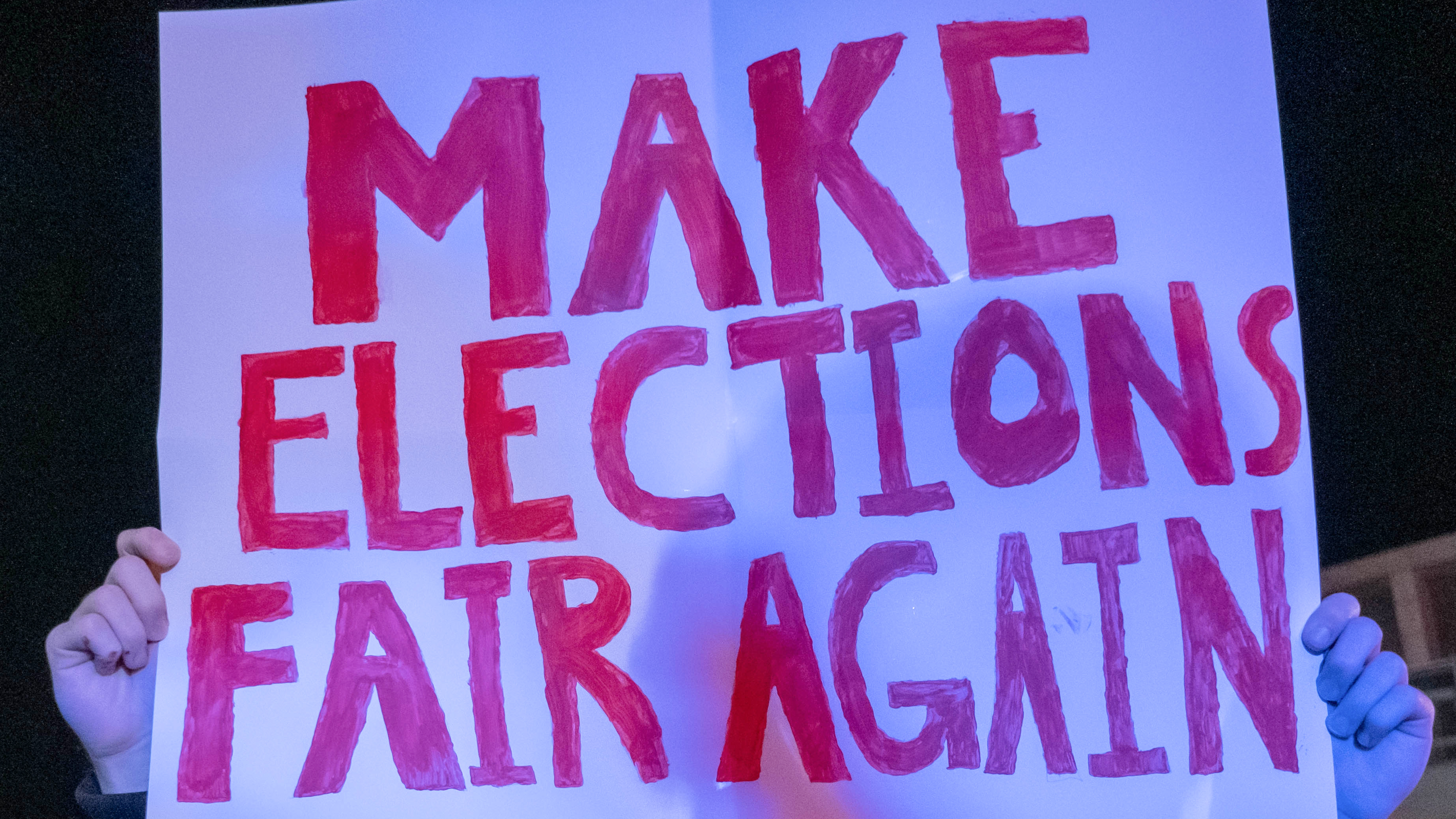
The recent U.S. election has led to accusations of voter fraud. /Seth Herald/AFP
The recent U.S. election has led to accusations of voter fraud. /Seth Herald/AFP
As the world watches the lengthy culmination of a U.S. presidential election plagued by accusations of cheating, voter suppression and ballot fraud, has the prospect of digitized voting ever been more attractive?
U.S. President Donald Trump's allegations center, in part, around the slow counting of votes. As the count has continued into a second and third day – largely sorting through postal votes – Trump's lead has diminished.
A solution to the U.S.'s problems may be found in Estonia, where the internet, which has transformed so many aspects of life already – is now revolutionizing democracy.

Estonia has been voting over the internet (I-voting) since 2005, and with each election the engagement from the electorate grows. Peaking last year in 2019's parliamentary elections, when 247,232 people, or 43.8% of all participants, voted over the internet.
I-voting is an element of E-democracy, the use of digital technology in the political and governance processes. For advocates, E-democracy is not only a solution to make governance more efficient, but a tool to restore faith in the democratic process.
Florian Marcus, a digital transformation advisor at the E-Estonia Briefing Center – a Tallin-based body that advises the government, says: "When Estonians started thinking about the implementation of this, they were extremely happy to just try things out. There was a sandbox feeling in the government that we should just try everything and see what sticks, see what works."
'It only takes a minute'
At first, in the early 2000s, it was cabinet members who used an I-voting service, allowing them to vote on agenda items while on the move. After it proved successful they rolled it out to the wider population.
The system has now been used in local, national and European elections.
Distinct from E-voting – which uses electronic devices to record votes, the Estonian I-voting system relies on a mobile app. Once downloaded, voters verify their identity using their government ID card. After voting for their preferred candidate, the user enters a pin number, akin to a digital signature, which once entered is legally binding. The voter's identity is then removed from the ballot before it reaches the National Electoral Commission for counting, thereby ensuring anonymity.
"It only takes a minute," says Marcus.
Despite what some advocates have suggested, there hasn't been an increase in voter turnout with Estonian I-voting, which was also the case with the Norwegian experiment.
"The truth is that ... people who are determined to vote, they will vote one way or another," explains Marcus. "So for those people, we just made life easier, you know, and for those people who don't want to vote, they still don't want to vote."
Despite this, the system is growing in popularity. "What we've seen is also that the sticking rate is extremely high. So once people have tried it out online, they're extremely unlikely to go back to paper afterwards … the usage rate of voting [systems] does not go down. It only ever goes up," notes Marcus.
Wietse Van Ransbeeck, the co-founder of Citizenlab, a digital platform facilitating consultation between government and the public, believes the main benefit of e-democracy in all forms (including I-voting) is about addressing a "democratic deficit."
"Citizens don't feel connected anymore to the policymakers. There's a low level of trust and citizen participation. This is a very important instrument to restore that trust," he says.

Vote-counting depots have been picketed by pro-Trump supporters. /Jeff Kowalsky/AFP
Vote-counting depots have been picketed by pro-Trump supporters. /Jeff Kowalsky/AFP
'Nothing is unhackable'
Over the last presidential term, both of America's political parties have focussed on election security – be it the Democrats with the Clinton email hack in 2016, or Trump's allegations of fraud in the 2020 race.
And while I-voting systems aren't unhackable, Estonia has had no issues in its 15-year run.
There remain security concerns with I-voting, Marcus notes: "There is not a single way of voting, whether it's on paper or online, that is 100 percent safe – nothing is unhackable.
"We see right now in the U.S. also that there are myriad discussions and different states about whether someone counted the paper ballot the correct way or not. So it's extremely hard to guarantee everything 100 percent."
As important as cyber-security is, education on cyber-hygiene – the practices that users of digital devices take to maintain online security – is imperative.
Marcus explains that "the truth is that most hacks that happen these days are not because of bad encryption or bad firewalls, but rather because one person in a big organization clicked on the wrong link and now the entire server system is at risk."
This was the case in the 2016 U.S. presidential election, when the chair of Hillary Clinton's campaign, John Podesta, had his emails hacked by a "spear-phishing" attack.
Estonia has mitigated against the risk of hacking with robust cyber-security mechanisms including having voting tabulation servers not connected to the internet.
Why is Estonia alone?
For all Estonia's success, other countries have been reluctant to follow suit. Switzerland, which has had forms of digital voting since 2003 – first in its Geneva canton, before spreading elsewhere – has suspended the practice, following a campaign by computer scientists and politicians concerned by a lack of security.
A new digital voting system is expected to be proposed in 2021, it remains unclear if it will be adopted.
For Marcus the lack of take-up is an issue of technology rather than security. I-voting technology is reliant upon government ID cards, which many countries don't have. "In the UK for example, you don't have a government ID card, you don't have a universal electronic authentication system in place."
Marcus warns that "if you don't have secure data exchange between different government authorities, then it is extremely hard."
Other nations have dismissed the idea due to their size, Estonia has a population of 1.2 million, the U.S. has 328 million. The huge population disparity isn't an issue for Marcus, despite the ongoing problems with the U.S.'s presidential elections, the country has provided a ballot system infrastructure that is far more complicated and costly than a server infrastructure, he notes.
A solution to decreasing trust?
To boost public confidence, the Estonian government has published the source code of its I-voting system online, while its citizens have access to a data tracker through which citizens are notified about which government authority is looking at their data and for what reason.
"In Estonia, we have a very clear idea of who is using the data, for what reason and in what context. I think that helps in building that societal trust, transparency, which is really important," notes Marcus.
Van Ransbeeck agrees. In contrast to the opaque algorithms that social media giants like Facebook use, it is essential that governments are not only transparent with data but "that they actually design the public sphere according to their democratic values."
Bruised by the past four years of hacking allegations, from both sides of U.S. politics, could Estonia, and its I-voting successes, show a way for trust to be restored in the electoral process?

